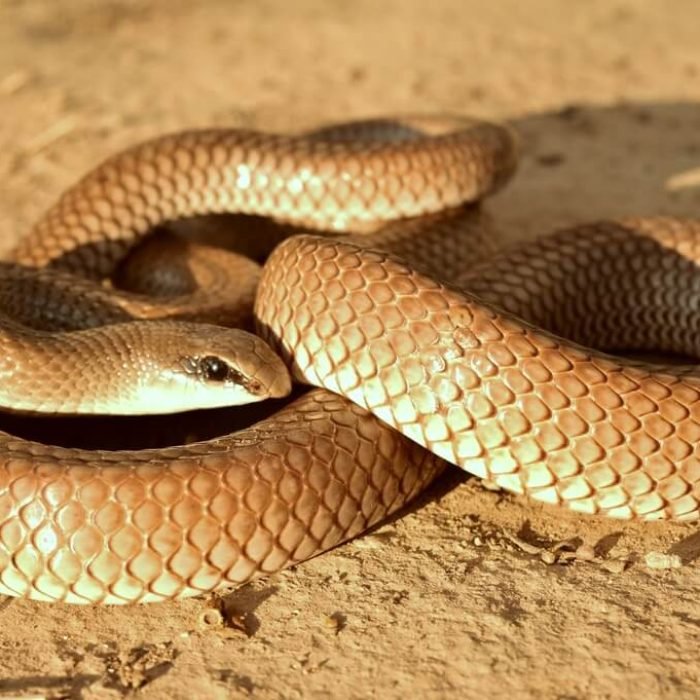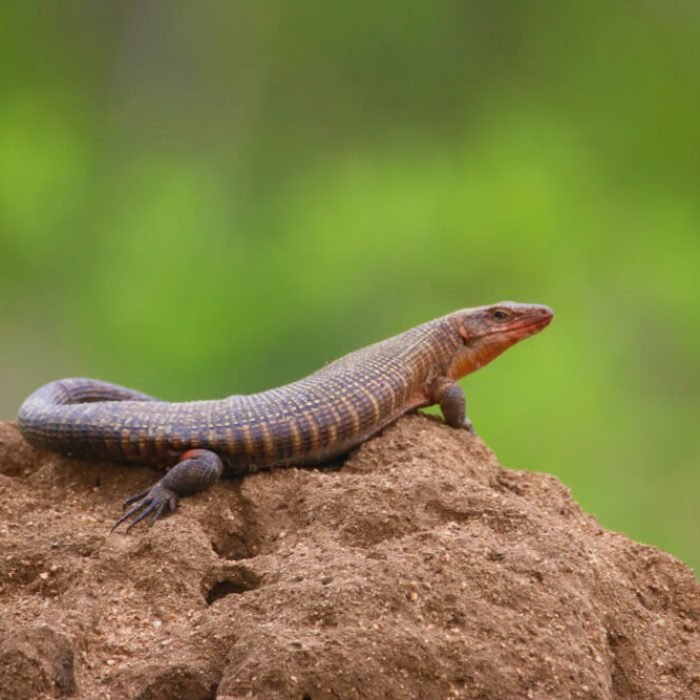Angolan Night Adder
( Rasmussen’s Night Adder, Kasanka night adder )
- Causus rasmusseni
- IUCN Status: Data Deficient
- Threat: Very deadly
- Venom/Toxin: cytotoxic venom
- Trend: decreasing
- Avg. Population: unknown

General Information
The Angolan night adder, rasmusseni’s night adder or Kasanka night adder is a new species that was recently identified in North western province of Zambia. It is near-endemic to Zambia, Angola and possibly the DRC.
Description
Night adders (Causus) are stout snakes, typically under 1 m. Unlike most vipers with distinct heads covered in small scales and elliptical pupils, Causus has a slightly distinct head with nine large, symmetrical shields and round pupils. Their broad rostral scale can be pointed or upturned, and the nostril lies between two nasals and an internasal. They have long frontal and supraocular scales, a loreal scale separating nasals and preoculars, and suboculars separated from supralabials. Their mandible includes splenial and angular elements.
Their fangs differ as well; lacking the typical viper hinge action between the prefrontal and frontal bones, the maxillary bones rotate sufficiently to erect the relatively short fangs. A suture line along the fang indicates incomplete canal closure.
The body is cylindrical or slightly flattened and moderately slender, with smooth or weakly keeled dorsal scales possessing apical pits. Rounded ventral scales and a single anal plate are present. The tail is short, with single or paired subcaudal scales.
Uniquely among viperids, some Causus species have exceptionally long venom glands extending down the neck, reaching up to 10 cm along the spine, with long ducts to the fangs. Internally, they possess unusually long kidneys, a developed tracheal lung with two tracheal arteries, and a liver that overlaps the heart’s tip.
Fun Facts
Despite their common names, species of the genus Causus are active during the day, as well as at night.
Ecology & Behaviour
When disturbed, they will engage in a ferocious hissing and puffing threat display. They may lift the anterior part of the body off the ground in a coil and make a powerful swiping strike; juveniles have been known to come off the ground. Others specimens may raise the anterior part of the body off the ground, flattening the neck and moving forward, tongue extended, like a small cobra. The rather frantic strikes are often combined with attempts to quickly glide away.
Diet
The diet of Causus species consists almost exclusively of toads and frogs. Gluttony has been reported; when prey is abundant, they may eat until they are literally unable to swallow any more food.
Reproduction
All Causus species lay eggs (oviparity), which among vipers is considered to be a more primitive trait, though not unique. The average clutch consists of some two dozen eggs that require an incubation period of about four months. Hatchlings are 10–12.5 cm in total length (body + tail).
Conservation
It is categorized by the International Union for Conservation of Nature (IUCN) as, ” Data Deficient ” due to very little information being available.
Distribtion & Habitat
Occurs in moist Miombo woodland and possibly in other broad-leafed savanna. This viper species was described from two specimens from north-western Zambia, and potentially occurs in Angola and southern Democratic Republic of the Congo.
Interaction With Humans
In spite of their enormously developed venom glands, night adders do not always use them to subdue their prey. The venom would act fast enough, but often they simply seize and swallow their prey, instead.
Causus venom is weaker than that of the puff adder (Bitis arietans). Envenomation normally causes only local pain and swelling. Antivenin treatment should not be necessary. Nevertheless, South African polyvalent serum is known to be effective against the venom of at least two species of the genus Causus. However, envenomation can be very serious and in at least one case a bitten child had to have a fasciotomy. A number of small dogs have had limbs amputated or died due to bites from these snakes. The danger from these snakes should not be underestimated as a bite from a large individual on a small child could potentially be fatal.
No recent deaths have been reported due to these species. Earlier reports of fatalities were based on anecdotal evidence; the species involved likely were not properly identified or the cases were grossly mismanaged.
Share:
- Phylum: Chordata
- Class: Reptilia
- Order: Squamata
- Family: Viperidae
- Genus: Causus
- Length: up to 1m









